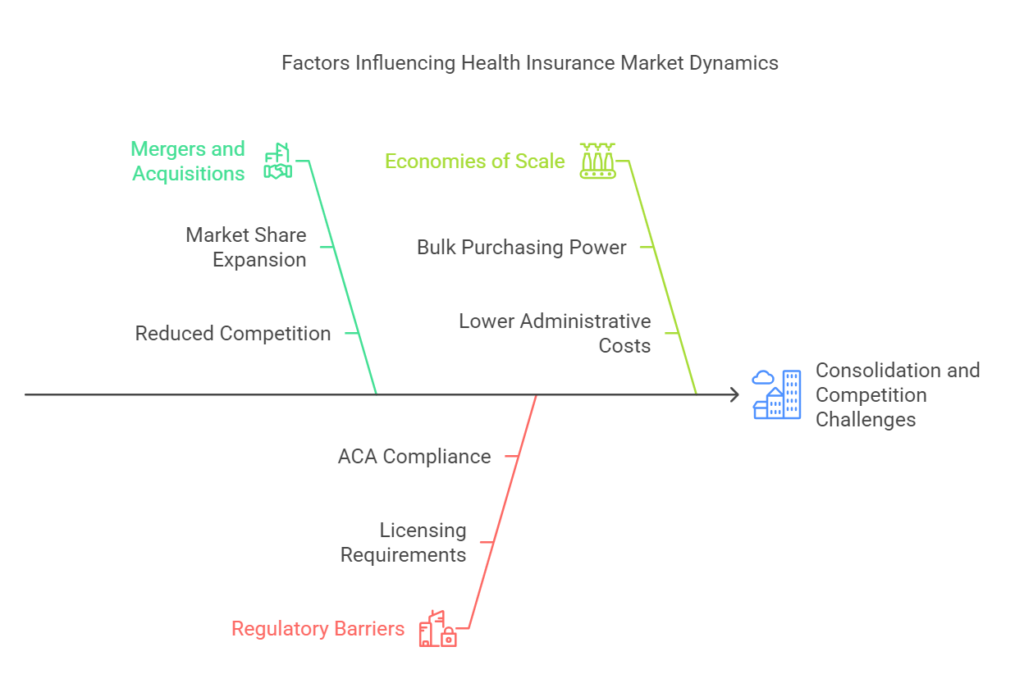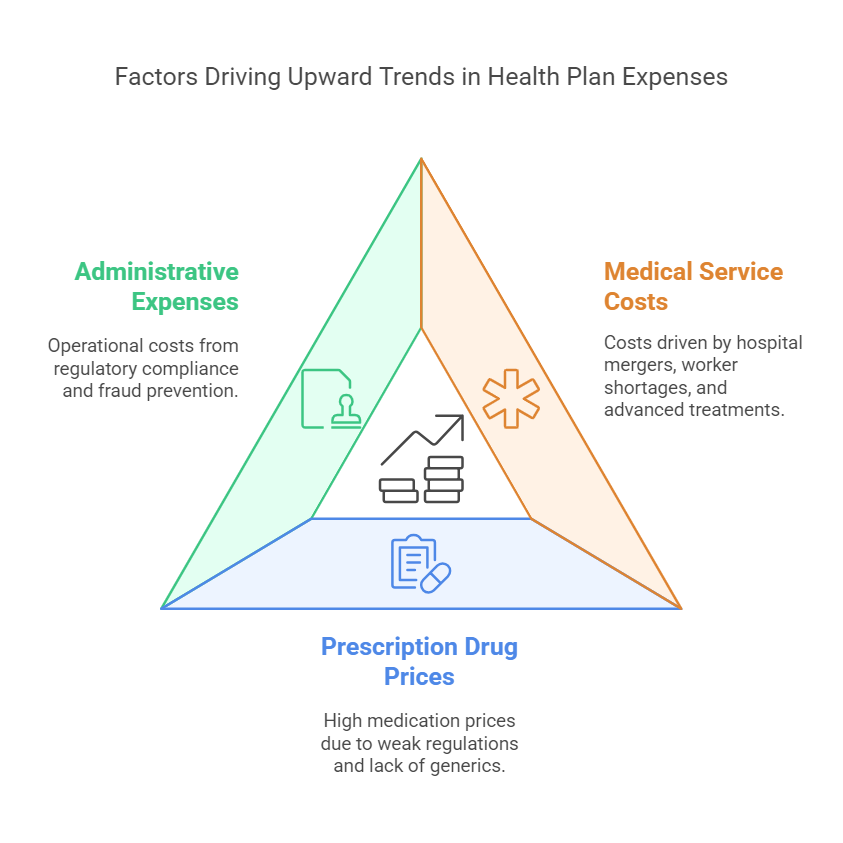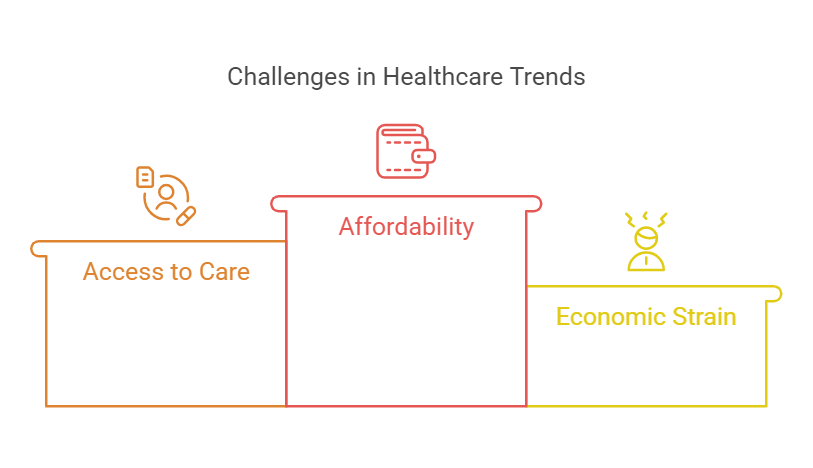In recent years, Americans have faced escalating costs for health plans, a trend that shows no signs of abating. A significant factor contributing to this surge is the increasing concentration within the health insurance market. Understanding the dynamics of this concentration, its underlying causes, and its impact on consumers is crucial for navigating the complexities of today’s healthcare landscape.
Understanding Market Concentration in Health Insurance
Market concentration occurs when a small number of insurers dominate the market share within a specific region or nationally. This dominance can lead to reduced competition, often resulting in higher premiums and fewer choices for consumers seeking health plans.
Key Factors Driving Market Concentration
Several factors have contributed to the increasing concentration in the health insurance market:
Mergers and Acquisitions:
Large insurance companies have merged with or acquired competitors, consolidating market share and reducing the number of independent players.
In 2024, the health insurance industry witnessed significant consolidation through mergers and acquisitions, impacting market dynamics and consumer choices. Notable examples include:
- UnitedHealth Group’s Acquisition Attempt of Amedisys: UnitedHealth Group pursued a $3.3 billion acquisition of Amedisys, aiming to expand its home health and hospice services. However, the U.S. Department of Justice filed a lawsuit to block the deal, citing concerns over reduced competition in the sector.
The Wall Street Journal - Sanford Health and Marshfield Clinic Health System Merger: Sanford Health announced plans to merge with Marshfield Clinic Health System, aiming to create an integrated health system with extensive reach. The merger would encompass numerous hospitals, providers, and health plans, further consolidating the market.

Regulatory Barriers:
Stringent regulations can deter new entrants from joining the market, limiting competition and innovation in health plan offerings.
Some of the biggest regulatory barriers include:
- State and Federal Licensing Requirements – Any new insurance provider must meet extensive licensing and solvency requirements in every state they operate in, making expansion costly.
- Capital Reserve Requirements – Insurers must maintain significant cash reserves to pay claims, making it expensive for new players to enter the market.
- ACA Compliance Costs – The Affordable Care Act (ACA) imposes strict rules on pricing, coverage, and essential benefits, making it hard for smaller insurers to compete with industry giants.
- Rate Approval Processes – Insurers must submit rate increases to state regulators for approval, limiting their flexibility compared to larger firms that can absorb financial losses more easily.
Economies of Scale:
Larger insurers benefit from economies of scale, allowing them to operate more efficiently and negotiate better rates with healthcare providers, further entrenching their market position.
These advantages include:
- Bulk Purchasing Power – Large insurers negotiate lower rates with hospitals and drug companies because they serve millions of members.
- Lower Administrative Costs Per Person – Larger firms can spread their fixed costs (like technology, compliance, and claims processing) over more policyholders, making it cheaper to operate.
- Better Risk Pooling – With a larger customer base, major insurers can balance out high-risk patients with lower-risk ones, keeping premiums more stable.
Impact on Health Plan Costs
The concentration of the health insurance market has several implications for the cost of health plans:
- Higher Premiums: With reduced competition, dominant insurers have greater pricing power, often leading to increased premiums for consumers.
- Limited Plan Options: A concentrated market can result in fewer health plan choices, restricting consumers’ ability to find coverage that best suits their needs.
- Decreased Innovation: Less competition may lead to stagnation in the development of new and improved health plan offerings, affecting the quality of coverage available.
Inflation and Health Plan Costs
Inflation in the healthcare sector further exacerbates the rising costs of health plans. Key contributors include:

Medical Service Costs: Increases in the prices of medical services directly impact the cost of health plans.
Here’s why:
- Hospital Mergers – Many hospitals are merging into large networks, reducing competition and allowing them to charge higher prices for services.
- Shortages of Healthcare Workers – A growing shortage of doctors, nurses, and specialists means hospitals must pay more for staff, driving up overall costs.
- Higher Costs for Advanced Treatments – New medical technologies and specialized treatments are expensive, and hospitals pass these costs onto insurers.
- Increased Demand for Services – An aging population and rising chronic disease rates are leading to higher healthcare utilization, putting upward pressure on costs.
Prescription Drug Prices: Rising costs of medications contribute significantly to overall health plan expenses.
Several forces contribute to this trend:
- Pharmaceutical Price Control Laws Are Weak – Unlike other countries, the U.S. does not regulate drug prices, allowing manufacturers to set high prices.
- Lack of Generic Alternatives – Drug companies extend patents and delay generics from entering the market, keeping costs high.
- Middlemen (Pharmacy Benefit Managers) – These third-party companies negotiate drug prices, but they often prioritize higher-cost drugs to secure bigger rebates.
- Research and Development Costs – Drug companies justify high prices by pointing to expensive R&D, though many experts argue that profit margins are excessive.
Administrative Expenses: Operational costs, including compliance with regulatory requirements, add to the financial burden on insurers, which is often passed on to consumers.
These regulatory requirements include:
- HIPAA Compliance – Protecting patient data requires heavy investment in cybersecurity and compliance measures.
- Medical Loss Ratio (MLR) Rules – Insurers must spend a certain percentage of premiums on care, limiting flexibility in pricing and profitability.
- Claims Processing & Fraud Prevention – Extensive oversight and fraud detection systems increase administrative expenses.
- State-Specific Rules – Insurers must comply with different laws in each state they operate in, requiring additional legal and compliance teams.

Challenges Posed by Current Trends
The current trajectory presents several challenges:
- Affordability: As health plan costs rise, affordability becomes a pressing concern, particularly for low- and middle-income individuals and families.
- Access to Care: Higher costs can lead to individuals forgoing necessary medical care, resulting in poorer health outcomes.
- Economic Strain: Employers, especially small businesses, may struggle to provide health plans to employees, affecting workforce stability and satisfaction.
Conclusion
The increasing concentration in the health insurance market, coupled with inflationary pressures, poses significant challenges to the affordability and accessibility of health plans. Consumers are left with fewer choices and higher costs, underscoring the need for innovative solutions.
Organizations like PEO4YOU play a pivotal role in this industry. By offering tailored healthcare plans and comprehensive health coverage, PEO4YOU provides valuable alternatives for individuals and businesses seeking quality care without the burden of escalating costs. Their services include:
- Customized Healthcare Plans: Designed to meet the unique needs of clients, ensuring optimal coverage.
- Comprehensive Health Coverage: Including medical, dental, and vision options to promote overall well-being.
- Competitive Pricing and Renewals: Leveraging partnerships to offer cost-effective solutions in a challenging market while providing solutions with a history of low, stable renewal increases.
By exploring options with PEO4YOU, consumers can go through the complexities of the current health insurance market and secure the health coverage plan they need







